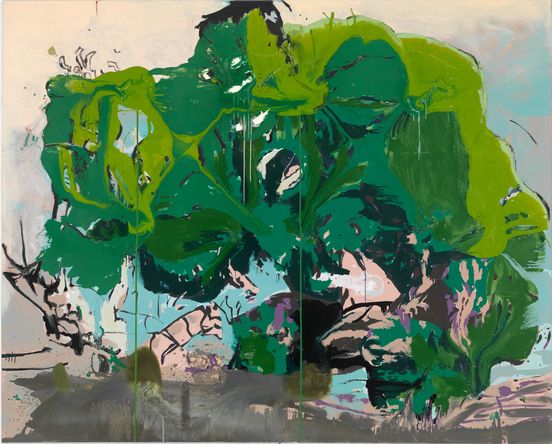Provincial and divided: Until 1989 East and West Berlin were both largely cut off from the international art scene. Only when the Wall came down and Germany was united did the city rise again as a hub of the arts. Waste land, empty dwellings, cheap rents, creative niches, work-in-progress, pop-up spaces – in the 1990s, the sense that something new was taking shape attracted many young artists from all over the world. Galleries set up camp in the capital, and so did newspapers and magazines. New art institutions, project spaces and contemporary art formats sprouted, among them the berlin biennale, held for the first time in 1998 with major international participation. The emerging art scene and vibrant club landscape forged the legend of young, creative, partying Berlin that still persists today.
![[Translate to English:] Olafur Eliasson, I can only see things when I move, 2004 Print by Olafur Eliasson, Colour photogravure on Somerset White Satin, 130,3 x 129,5 cm](/assets/_processed_/5/8/csm_Zeitgenoessische-Kunst-Berlin-Olafur-Eliasson-I-can-only-see-things-when-I-move_845aeb7061.jpg)
[Translate to English:] Olafur Eliasson, I can only see things when I move, 2004
© Olafur EliassonThe Berlinische Galerie is one of the key venues for contemporary art in the city. Our visitors stumble across contemporary output as soon as they enter the first big exhibition hall. Berlin artists come here to develop fresh ideas and to debate social issues. In the wake of these exhibitions, brand-new art keeps coming into our collection. Thanks to Senate funding, we are also able to buy new works every year by artists who live and work in Berlin. Recent acquisitions include items by John Bock, Olafur Eliasson, Heiner Franzen, Ulrike Grossarth, Petrit Halilaj, Alicja Kwade, Loredana Nemes, Julian Rosefeldt, Heidi Specker and Thomas Zipp. These pieces represent different approaches and technqiues, medias and identities, embodying the diversity of art in Berlin today.
